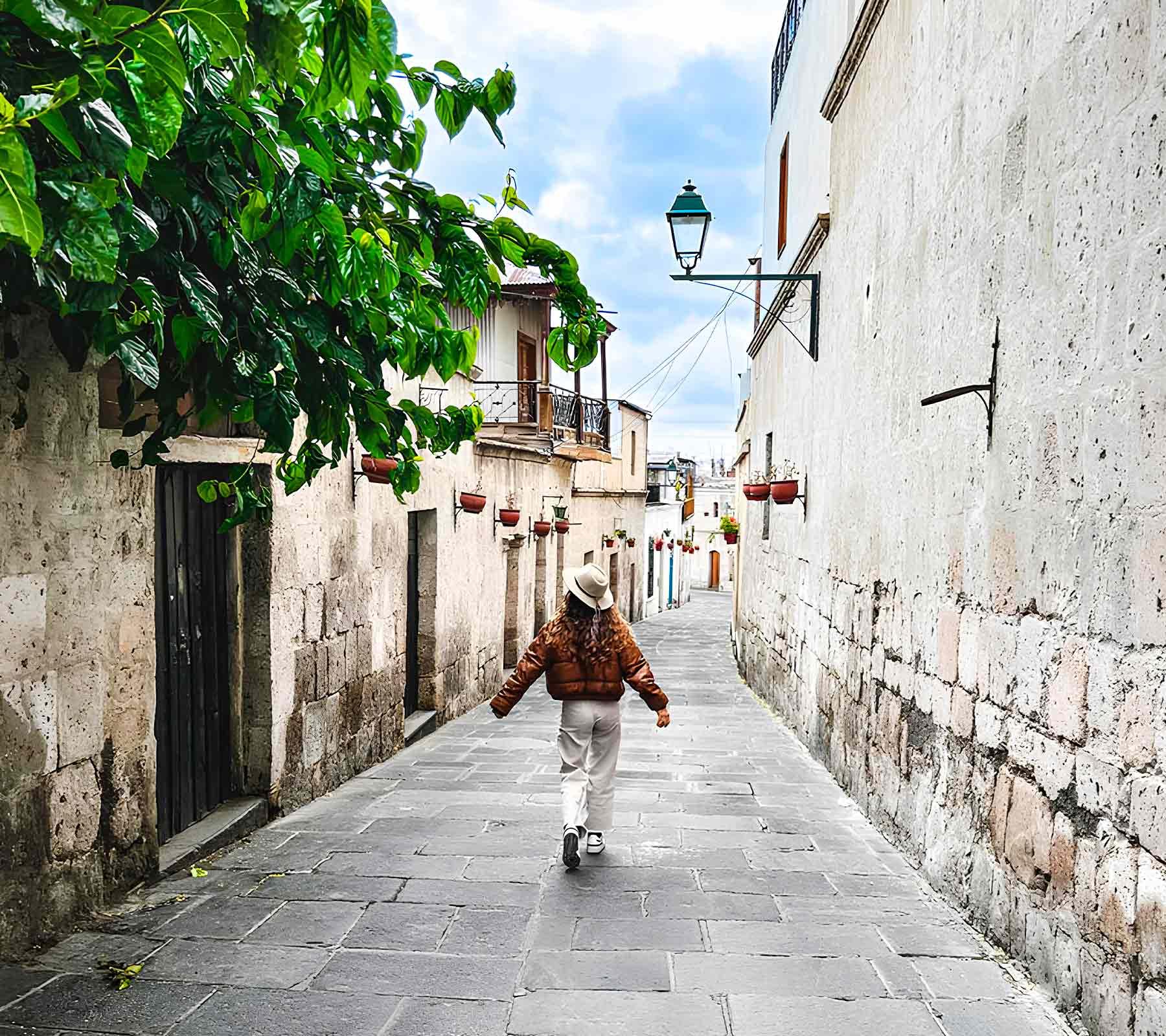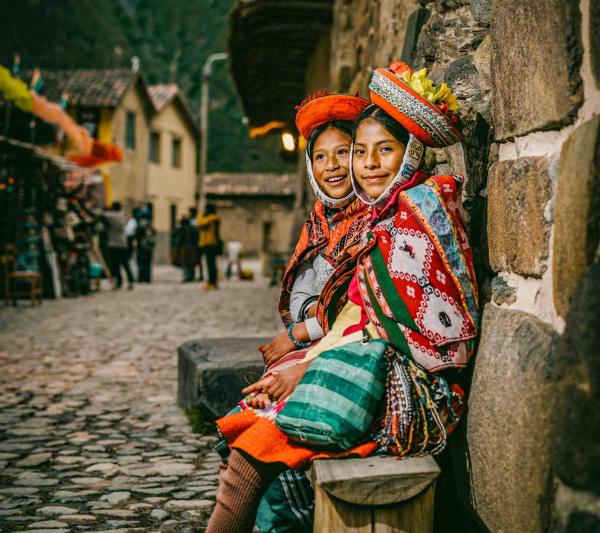The San Lázaro neighborhood is the oldest group of houses in the city of Arequipa. These homes, streets and small squares are made mainly of 'sillar', a white volcanic stone widely used in most temples and mansions in the city. Approximately 40 families lived there, who were the first inhabitants of the city. Visiting this place is totally free. It is one of the most popular tourist attractions in the 'white city'.
Description
The San Lázaro neighborhood is the first set of streets and homes that were born in the city of Arequipa. Its origin predates the founding of the city, on August 15, 1540. It is made up of several narrow, cobbled streets as well as houses made with ashlar, a volcanic stone widely used for the construction of temples and palaces in Arequipa. The neighborhood is made up of the Violín, Cristales, Desaguadero, Ripacha, Calienes, Combate Naval, Bayonetas and more alleys.
In the San Lázaro neighborhood, a small chapel stands out, considered one of the oldest in the city. The narrow cobblestone streets, the white walls made of ashlar and the silence of the place provide an indescribable atmosphere that attracts visitors. There you can buy the famous 'Ripacha' bread (made from wheat). Because it belongs to the Historic Center of Arequipa, it is considered a World Heritage Site by UNESCO. Likewise, the National Institute of Culture of Peru (INC) declared the neighborhood as a 'Monumental Urban Environment'.
Location
The San Lázaro neighborhood is located in the Historic Center of the city of Arequipa, about 850 meters from the Plaza de Armas. It is located on the banks of the Chili River, between Juan de la Torre, Puente Grau and Jerusalem streets.
How to get?
To get to the San Lázaro neighborhood you only have to walk approximately 15 minutes from the Plaza de Armas of Arequipa.
History
The history of the San Lázaro neighborhood is very old. In pre-Inca times, the site was occupied by the Yarabas cultures as well as Collas, Lupacas, Tiahuanacos, Carumas, Ubinas and more. At that time the site was probably called Llallinhuayo. After the Inca occupation, the Spanish arrived and founded the city of Arequipa in 1540. Then, the first mansions that were born in the city were located in this neighborhood. It is believed that its name is due to the chapel of 'San Lázaro', run by the Dominican order. Others believe that it is due to the resurrection of one of its inhabitants.
In its beginning, the neighborhood was home to the Spanish and Dominican monks. It also served as a market. Some houses and streets in the neighborhood were damaged by successive earthquakes that occurred in 1555, 1582, 1784, 1821, 1948, 1958, 1960, 1979 and 2001. In the 20th century, the neighborhood was preserved and protected. In 1972, the INC declared it a Monumental Urban Environment. Because it is part of the Historic Center of the city, it is considered a World Heritage Site (2000) by UNESCO.
The streets and squares
The streets of the San Lázaro neighborhood are narrow, paved with black cobblestones and white walls made of ashlar. Some of the most famous streets are Bayoneta Alley (with a narrow passage), Crystals Alley (which does not have sidewalks) as well as Naval Combat Alley. Also notable is the Camporredondo square (in homage to the Spanish general who lived there), which was a market and today is called the Matorral square.
The ashlar
Sillar is a volcanic stone abundant in the mountains of Arequipa, which was widely used for the manufacture of temples, palaces and houses in the city of Arequipa during the colonial era. Most of the houses in the San Lázaro neighborhood are made of this material. There is a bridge made entirely of ashlar, which connects the hermitage and the square with the other streets. Due to the proliferation of constructions with this material, Arequipa is called 'White City'. There is even a tour called 'The Sillar Route'.
How much does it cost to go?
The visit to the San Lázaro neighborhood is free. Walking through its streets and squares has no cost. It is also possible to hire the services of a tour guide who will explain to the visitor everything they need to know about this historic place.
More information
There is a belief that the founding of the city of Arequipa took place in the San Lázaro neighborhood. However, this belief is not true. The founding of the 'White City' actually occurred in the current Plaza de Armas.
Ripacha is the name of one of the streets in the San Lázaro neighborhood. This name is also given to a traditionally baked wheat bread, which stands out for its delicious flavor and the custom of eating it for breakfast accompanied by 'adobo' (traditional Arequipa dish).
Some advices
In addition to the San Lázaro neighborhood in Arequipa, don't miss the opportunity to get to know some of the most traditional neighborhoods in the city, such as the neighborhoods of Yanahuara, Cayma, Selva Alegre, Vallecito and more.
Some of the city's most famous celebrations take place in the traditional neighborhoods of Arequipa, such as the 'Burning of Judas'. This religious festival is celebrated every Easter Sunday by burning a doll that represents Judas. Before being consumed by ashes, a will is read criticizing the errors of society.
What to wear? To make your walk comfortable, it is advisable to wear shoes and sun protection, especially in summer. Although most snack shops accept credit cards, it is recommended that you also have cash.
When to visit it? It is a good plan to take advantage of the morning to tour San Lázaro and finish the tour by having lunch at a spicy restaurant. This way, the afternoon is free to visit other sites in the city such as the historic center or the Monastery of Santa Catalina, which are very close.
Recommended spicy dishes. There are many, but two of the most recognized by locals and tourists are “La Mundial” and “La Nueva Palomino”.
Recommended dishes. The shrimp chupe, the stuffed rocoto, the Arequipeño adobo, the bachelor or solterito and ocopa are some of the classic dishes of the Arequipa culinary culture. Among the desserts, the Arequipeño frozen cheese stands out.
Shrimp ban. If you want to try the famous shrimp chupe, you should know that fishing is prohibited between the months of January and March, so you will not find any dish with this ingredient.
Best Peru Tours
Arequipa is the natural best destination in Peru. If you are planning to visit Peru, we recommend exploring the Colca Canyon and other amazing destinations in Arequipa. Additionally, you can enrich your experience by including a visit to the Machu Picchu citadel. Reserve our guided trips to Machu Picchu by contacting our travel experts, and you will be one step closer to completing your adventure.
- Inca Trail tours
- Huayna Picchu Mountain
- Huchuy Picchu Mountain
- 4 Day Inca Trail
- If you need help securing your Machu Picchu ticket, let us know. We will assist you in booking. BOOK ONLINE MACHU PICCHU TICKET






